We’ve had it wrong. Genealogists who go off on tangents who hop from this to that chasing rabbits back to their dens, we have the wrong metaphor. I have both hares and gophers in my backyard so I am surprised I did not figure this out earlier. But here goes…you know the drill you are looking for anything you can find on great-great-granny Emeline Jones and before you know it you are looking at her brother’s, Civil War pension file (he died in the Civil War), which reminds you, that you need to look for that Revolutionary War record for another ancestor. Then while you are at it before long, you are looking up historic maps of the area to see how close they lived to the battlefield, when you realize there’s a diary about a neighbor to your ancestors who wrote about the battle and off you go searching for a copy… and so forth and so on.
This method of research has been dubbed by my friend, George Sheldon, as Kelly’s rabbit hole Genealogy. But yesterday I had to correct him. It really is the gopher method. And the metaphor is perfect. You “go for” one thing and end up with lots of things you weren’t even looking for. You dig, and dig and dig and sometimes run in to stones and even a brick wall or concrete foundation and you just keep digging. Did you know a gopher can move up to 2 1/2 tons of soil a year? I am pretty sure I visit at least 5,000 web pages this year alone, if not this month.
Well I want to tell you about some heavy digging I did this past week. I started off working on my last blog post about the Fleur de lis, but that got me thinking very far afield. Asking “why” is all the enticement a gopher needs to start digging. But the why did John Shelden choose a Fleur de Lis embellished initials for a sheep brand in Colonial America was not a simple rabbit hole it led to a network of intertwined passageways back in time. And where did I end up? Two very interesting records. First, The register of the guild of Knowle in the county of Warwick, 1451-1535. Look at the beautiful pages of the illuminated manuscript here. And this is a black and white version of one of the pages :

So you might be wondering why would she be looking in the 1400-1500’s record of the town of Knowle? Because I can is the short answer. But before I truly answer the question I must share with you my research question. My question is a deceptively simple one: Where did the two early SHELDONs in America come from in England? This question has been asked hundreds of times in the past three hundred plus years and still there has been no answer. The best research was accomplished by E.Hortense Sheldon in her treatise Sheldon’s Prior to 1700 published in 1961. I have worked on this question in earnest with Dale SHELDON over the past 6 years including two research trips to England together.
A gopher can dig 6 feet deep and have a network of tunnels covering 200 to 2,000 square feet. That’s more than 1/5 of an acre and in my yard it’s closer to 1/2 acre overall. That’s because gophers are social animals. They move in, they bring their friends and family.
Again a perfect metaphor. We are researching the origins of two SHELDON men whose DNA has revealed they are closely related. One is an Isaac SHELDON who appears to have come to Windsor, Connecticut in 1639. The other is a John SHELDON who first appears in Newport RI in 1652 and ends up in Kingstown, Rhode Island. We do not know the exact relationship of the two men, they could be father and son or cousins but we know they share the same YDNA signature. To date the SHELDON DNA Project has sponsored a dozen YDNA kits for those with recent English ancestry and to date not a single one has matched the descendants of Isaac and John (of which 41 have tested and they all match each other). So where does one turn?
My answer to that question was two-fold. First, I decided to focus on all the early settlers of Windsor, Connecticut. And also of Kingstown, Rhode Island with a nod to early associates of John SHELDEN there and in Newport, Rhode Island (but I am not including them in this post). So what did I do? I worked backwards from these founders first sifting through to find any that either were from Warwickshire, England or did not have a place of origin identified or the identification was sketchy at best. And that’s what led to one Reverend Ephraim HUIT (HEWITT) who came to Windsor in 1639. And he is incredibly important because he arrives in Windsor about the same time that Isaac SHELDON shows up in the records and some have Isaac as being a part of a contingent who came from England with HUITT. The others arriving about this time in Windsor came from Dorchester, Massachusetts. By looking at the origins of these early settlers I can place them in two groups. Those who likely came with Rev. Huit and those that came from Dorchester. (The Dorchester group have origins in Somerset, Devon and Dorset , England.)
And second was to work forward from the records back in England. We are lucky that we know a bit about Rev. HUIT from the historical record. He studied at Cambridge and matriculated in 1611. He married Isabel OVERTON the 22nd of April, 1622 at Tarvin, Cheshire, England. It has been estimated he was born about 1592 but this is based on current age at graduation. During this time frame he might have been between 14-16 at graduation, so an estimate would more like be 1593-1597. Based on his marriage date of 1622 this might have been closer to 1597. He was first a curate at Knowle and then a Chaplain at Wroxall. He ran afoul of William Laud, Archbishop of Canterbury with his Puritan teachings and ends up robbed of his livelihood, he immigrates to America.
So where would one look for records of Wroxall? Well perhaps in the Records of Wroxall Abbey and Manor, Warwickshire John William Ryland London 1903. And we can find many things there but of note is the lack of parish registers between 1604-1641, except for one critical page from 1634. Please note: “Sarah Huitt the daughter of Ephraim Huit & Isabel his wife bapt. at Wroxall August the 10 1634.” It does not get any better than that! ALso note there is a GRESWOLD (aka GRISWOLD) on the page.
So my list of early settlers of Windsor filtering out those that came with the Dorchester group looks like this:
- Rev Ephraim HUIT bc 1597 prob Warwickshire. Definitely at Knowle and then Wroxall
- Daniel CLARK b 1639 said to be of Wroxil. We find a Daniel Clarke bpt 1608/9 at Wolston, Warcs.
- John BISSELL bc 1590 & alleged brother Thomas 1589. We find John BYSSEL bpt 16 Nov 1590 Sheldon, Warcs. ao of William and one Thomas BYSSELL bpt 24 Feb 1588/89 son of John
- John DRAKE Known to have married at Hampton in Arden, Warcs. to Lettice SHAXSPEARE 25 Jun 1615. Lettice was 1st cousin to the famous bard, William Shakespeare of Stratford-upon-Avon.
- Francis GRISWOLD bpt 10 Jan 1605 at Wootton Wawen, Warcs; son of Clement
- Edward GRISWOLD bpt 26 Jul 1607 at Wootton Wawen, Warcs; Son of George
- John MASON bc 1605 We find a John Mason bpt 21 Oct 1607 at Ladbroke son of Thomas & Joice (he did not have a Thomas or Joyce)
- George PHILIPS bc 1592 NO ISSUE We find George bpt 29 Dec 1583 at Eastham, Warcs. son of Nicholas PHILLIPS
- John PORTER bc 1610 We find bpt 13 Dec 1612 John Porter at Sutton Coldfield son of John PORTER
- Isaac SHELDON bc 1610 We find no baptisms for an Isaac SHELDON in this time frame anywhere in England.
- John TAYLOR bc 1605 uncertain he died at sea abt 1645. There are many possibilities for John in Warcs. But an interesting one is John TALOR bpt 6 Nov 1604 at Whichford, son of William
- William TILTON bc 1586 we find bpt 15 feb 1586 at Wolston, Warcs son of John. William we know had sons Peter, Abraham, Samuel and Daniel. We also find a bpt for a Peter 2 Apr 1620 at Wolston son of William
Twelve men. Of those, seven are solidly from Warwickshire: HUITT, CLARKE, BISSELL, DRAKE, GRISWOLD & TILTON And four are a bit more speculative: MASON, PHILIPS, PORTER & SHELDON.
Which leads me back to The register of the guild of Knowle in the county of Warwick, 1451-1535. and the early Visitations of Warwickshire. Why you may be asking. To see how long these families had been in the area. All twelve surnames are represented in the Guild of Knowle. All are very well represented except Tilton that has only one mention. The Guild of Knowle covered a very large geographic area which included parts of Worcestershire. These guilds often had a religious affiliation, provided for the poor and were a network of clergy, gentry, craftsmen and merchants. It was a fraternal association that fostered relationships be they personal or business. So they are an excellent way to find families before parish registers are to be found. And unlike the Visitation books they include the merchant and craftsperson classes.
There’s of course more to this story but here’s several RESEARCH POINTS
- When you can’t find something about your ancestor look at who his friends and associates are, track every last one down looking for clues
- Chase down every lead—every gopher hole
- Pay attention to surnames that pop up frequently when you are looking at your own
- Work backwards and forwards in time
- Don’t be persuaded by someone else’s sloppy research or speculations—they may be wrong (this is certainly the case with Ephraim Huit whose family goes back in Warwickshire for many centuries and is not of Cheshire as some speculate.)
When we are working in the 17th century backwards the records are often missing or incomplete so we have to search for every tidbit we can. That means unearthing lots of dirt hoping for a few diamonds in the rough. To be continued…
Kelly Wheaton Copyright 2021. All Rights Reserved.
First published at WheatonWood.com
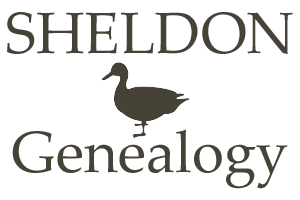
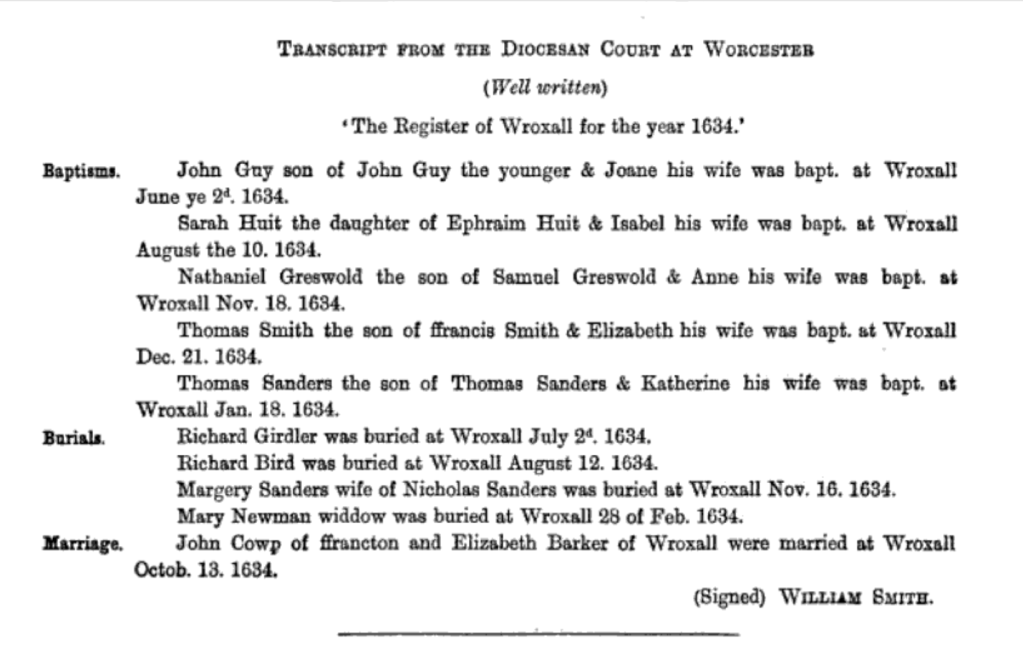
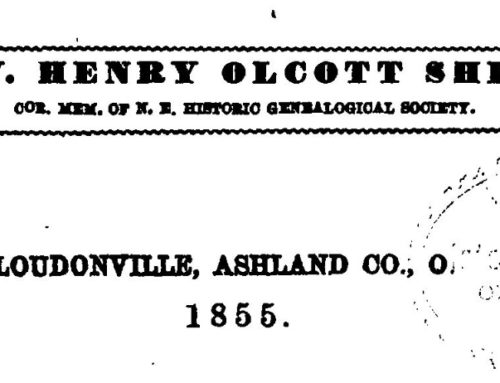
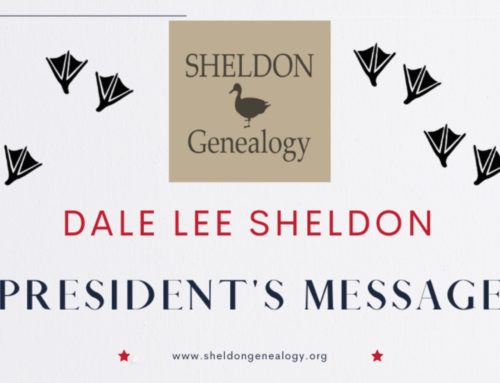
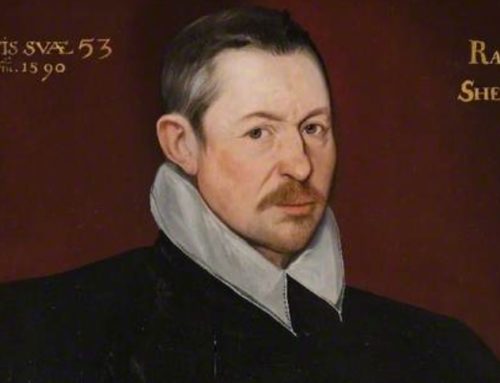


A very good post!
Thank you George!
Thanks, Kelly, fascinating connections. My Paternal grandparents were very close friends of Griswolds in the earl 1900’s in Ny. I wonder if their families intertwined for centuries before that, here and abroad!
The GRISWOLD & SHELDON Families have been in the same area for centuries and if I remember correctly there me be at least one intermarriage. I have two GRISWOLD lines myself.
As I read it, the jury did not “reach a verdict” and the court discharged the men. They paid what appears to be a fee to the court that may not have been a fine since they not convicted.
You are correct. They got off on a technicality—which I take to mean they had friends in high places…
[…] Gophering I […]